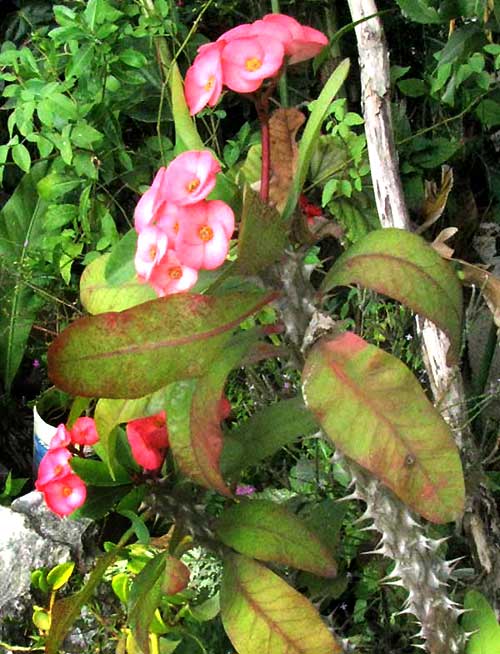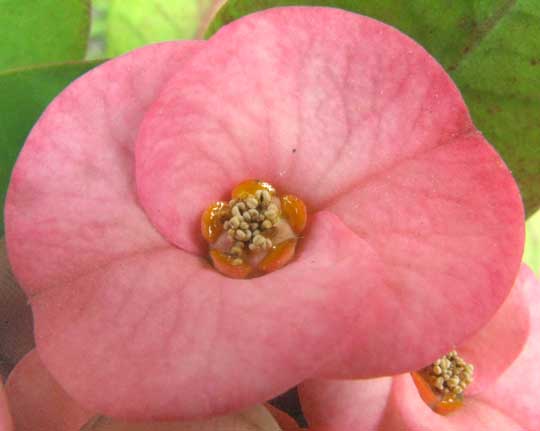Excerpts from Jim Conrad's
Naturalist Newsletter

from the March 18, 2012 Newsletter issued from Hacienda Chichen Resort beside Chichén Itzá Ruins; limestone bedrock; elevation ~39m (~128ft), N20.675°, W88.569°; central Yucatán state, MÉXICO
CROWN-OF-THORNS FLOWERING
In backstreet Pisté in a house's little foreyard cluttered with a dense hodgepodge of ornamental plants mostly rooted in dishpans and old paint buckets a four-ft-high (1.2m) plant with thick, sublimely thorny stems, a few leaves arising from the stem's top, and pink, strangely structured flowers is blossoming, seen above. Note the thorny stem at the lower, right.
The flowers don't look at all like normal blossoms, as shown below:

Several times we've seen flowers with this same basic construction -- most recently those of the Poinsettia, Euphorbia pulcherrima. The basic construction of flowers in the genus Euphorbia consists of several tiny, unisexual male and/or female flowers arising inside a cuplike structure known as a cyathium. Several cyathia are then subtended by large, red bracts, or modified leaves, which in the Poinsettia most people imagine to be the flower's petals. You might enjoy reviewing Poinsettia flower anatomy at www.backyardnature.net/mexnat/poinsett.htm.
Recognizing that here we have another Euphorbia, we can start understanding our thorny-stemmed plant's flower as seen in the last picture. In the center, the tiny, brown, oval things are the anthers of male stamens of several flowers. The five glistening, tongue-like items are glands on five mostly hidden cyathia. The red, veiny zone occupying most of the picture consists of two opposed bracts, which are modified leaves.
That exactly the same basic structure as seen in Poinsettia, except that the parts are smaller and more crammed together.
So, our thorny Pisté plant is the Crown-of-Thorns, EUPHORBIA MILII, much planted as an ornamental plant worldwide but native to Madagascar. The species name, milii, honors Baron Milius who introduced the plant into cultivation in France in 1821.